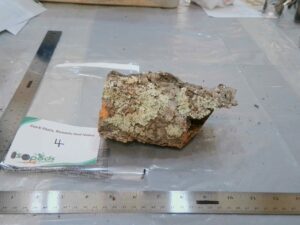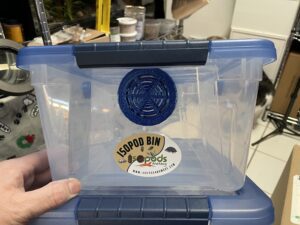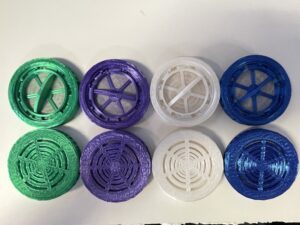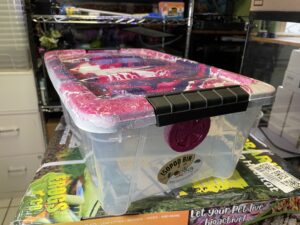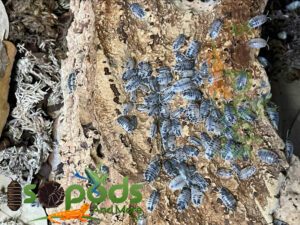Leopard geckos are fascinating creatures that make excellent pets. With their unique appearance and docile nature, they have become increasingly popular among reptile enthusiasts. These small lizards are native to the arid regions of Afghanistan, Pakistan, and India, and they require specific care to thrive in captivity.
The Importance of Creating a Suitable Habitat for Your Leopard Gecko
When it comes to leopard geckos, creating a suitable habitat is crucial for their overall health and well-being. In the wild, these geckos live in dry, rocky areas, so it’s important to mimic their natural environment as closely as possible. By providing them with a proper habitat, you can ensure that they feel safe and comfortable in their new home.
Choosing the Right Tank for Your Leopard Gecko
Selecting the right tank for your leopard gecko is essential. A tank that is too small can restrict their movement, while a tank that is too large may make them feel insecure. The general rule of thumb is to provide at least 10 gallons of space per gecko. Additionally, it’s important to choose a tank with a secure lid to prevent any escapes.
Setting Up the Leopard Gecko Tank
Once you have chosen the appropriate tank, it’s time to set it up for your leopard gecko. Start by placing a layer of substrate at the bottom of the tank. Newspaper or paper towels work well as a substrate, as they are easy to clean and do not pose a risk of impaction. Next, add some hiding spots and decorations, such as rocks, caves, and branches, to create a stimulating environment for your gecko.

Creating a Comfortable and Safe Enclosure for Your Leopard Gecko
Leopard geckos are nocturnal creatures, which means they require a dark and quiet environment to thrive. It’s important to place their enclosure in a location that is away from excessive noise and bright lights. Additionally, ensure that the tank is properly secured to prevent any accidental openings or escapes.
Essential Elements for a Leopard Gecko Terrarium
To create a successful leopard gecko terrarium, it’s important to include the essential elements that these lizards need to thrive. These include a temperature gradient, proper humidity levels, and a suitable lighting setup. By providing these elements, you can create an environment that closely mimics their natural habitat.
Maintaining the Ideal Temperature and Humidity Levels in the Tank
Leopard geckos are ectothermic animals, meaning they rely on external heat sources to regulate their body temperature. It’s crucial to provide a temperature gradient within the tank, with a warm side and a cool side. This allows the gecko to choose the temperature that suits them best. Additionally, maintaining the proper humidity levels is important for their overall health and shedding process.
![]()

Providing Proper Lighting and UVB for Your Leopard Gecko
While leopard geckos do not require UVB lighting like some other reptiles, they still benefit from a proper lighting setup. A light source that mimics natural daylight can help regulate their circadian rhythm and promote natural behaviors. Additionally, providing a small heat source, such as a heat mat or ceramic heat emitter, can help create the necessary temperature gradient.
Choosing the Right Substrate for Your Leopard Gecko Tank
When it comes to choosing a substrate for your leopard gecko tank, it’s important to prioritize safety and ease of cleaning. Avoid loose substrates, such as sand or gravel, as they can pose a risk of impaction if ingested. Instead, opt for safer options like reptile carpet, paper towels, or non-adhesive shelf liner. These alternatives are easy to clean and do not pose a risk to your gecko’s health.
Adding Decorations and Hiding Spots for Your Leopard Gecko
Leopard geckos are natural climbers and love to explore their surroundings. Adding decorations and hiding spots to their tank not only provides them with a stimulating environment but also gives them a sense of security. Rocks, branches, and caves are great options for creating a natural and enriching habitat for your gecko.
![]()

Feeding and Caring for Your Leopard Gecko in Its New Habitat
Feeding and caring for your leopard gecko in its new habitat is relatively easy. These lizards are insectivores, so their diet primarily consists of live insects, such as crickets, mealworms, and dubia roaches. It’s important to provide a varied diet to ensure they receive all the necessary nutrients. Additionally, make sure to provide a shallow dish of fresh water at all times.
Common Mistakes to Avoid When Setting Up a Leopard Gecko Tank
While setting up a leopard gecko tank may seem straightforward, there are some common mistakes that can be easily avoided. One of the most common mistakes is using loose substrates that can cause impaction. Another mistake is placing the tank in a high-stress area with excessive noise and light. By being aware of these mistakes, you can ensure that your gecko has the best possible living environment.
Conclusion
Creating a miniature ecosystem for your leopard gecko is not only rewarding but also essential for their overall health and well-being. By providing a suitable habitat with the right tank, substrate, temperature, and lighting, you can create a paradise for your gecko. Remember to always prioritize their safety and monitor their behavior to ensure they are happy and thriving in their new home.
CTA:
If you’re considering getting a leopard gecko as a pet, take the time to set up a proper habitat for them. Your gecko will thank you for it!



